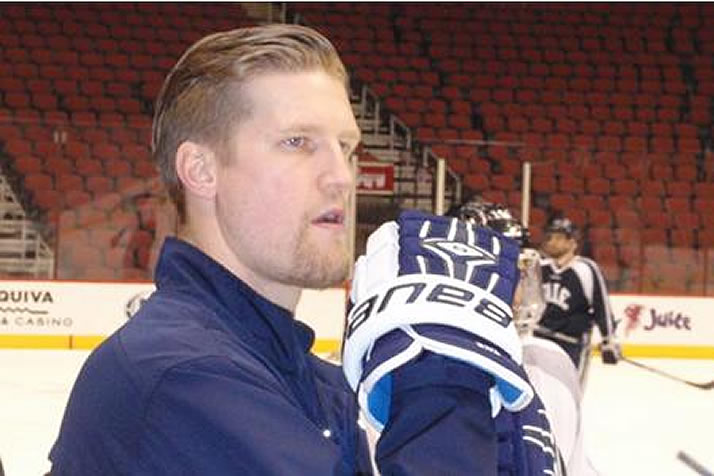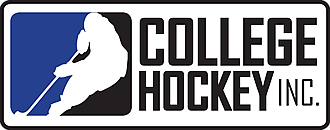Thursday, February 4, 2016
My Journey: Ryan Donald
Yale assistant coach shares his path to college hockey and a successful pro career.

By Ryan Donald
As far back as I could remember the school year and hockey season would begin with AAA tryouts – which in my case also meant it would start with getting cut from the AAA team. The beginning of my grade 12 year, in 2003, would unfold just like the previous five had – with me being told I needed to improve some holes in my game, to keep my chin up, and that the AA level was still good hockey.
I think it is safe to say that I wasn’t the odds-on favorite to be voted the captain of Yale’s hockey team and attend NHL training camp seven years later.
Luckily for me, after being cut for the sixth and final time in my hometown of St. Albert, I was able to obtain a release from my local branch and permitted to try out elsewhere. It was decided by some official names-in-a-hat process that I could try out for the Maple Leaf Athletic Club in Edmonton. The MLAC was a foe that I had faced at the AA level for years, and I would now try to earn a spot on their AAA roster.
Once I made the AAA team (seventh time is a charm!) I had the opportunity to play at the AAA level for the first time in my minor hockey career. This one particular season was great for my development, and prepared me to make the jump to Junior ‘A’ hockey the following year.
To quickly summarize: The first time I was able to play at the highest level for my age group in Alberta was when I was just turning 17 years old. I never got invited to play on ‘Select Teams’. I wasn’t drafted in the WHL. I hadn’t been invited to Spring Camps or Main Camps by CHL teams. I hadn’t gone on any visits to Colleges. I didn’t have an NCAA commitment.
After attending three or four AJHL camps I signed a ‘White Card’ with the Fort Saskatchewan Traders since they were the only team that showed any interest in me. At this time my career would be sorted under the ‘needs time to develop’ category – and some had already written me off.
Fast forward to today – more than 13 years later – and I am writing to implore players and parents to fully understand their options as they navigate their own minor hockey, junior, and collegiate careers. After making the aforementioned rival AAA team, I was fortunate to go on and play two seasons in the AJHL and four years of Division I hockey at Yale University. I followed my amateur career with three professional seasons split between the AHL (a cup of coffee) and the ECHL (a few pots of coffee), with a Kelly Cup (ECHL Championship) to boot.
It’s safe to say that the setback I encountered at 17 years old wasn’t an endpoint, but merely a speed bump on the road to a hockey career I can proudly look back upon today.
I have since returned to Yale as an assistant coach, and I get to see firsthand just how players and parents are navigating the current hockey landscape. Some of what I’ve seen has compelled me to put fingertips to keyboard to outline my own experiences, and hopefully provide some insight into what is important during this unique phase of one’s hockey career.
As evidenced by my own minor hockey experience, a hockey career is far from set in stone at the age of 14 or 15. In fact if you continue to play all the way through junior hockey, you still have 5-6 years left to develop. Words can’t do justice to explain just how much time that is to grow as a player – speed, strength, puck skills, hockey smarts – all of the things that are crucial to becoming a complete hockey player.
In my case, the WHL conducted their annual Bantam Draft in late April of 2001, making me a mere 14 years old. (Sidebar: the first overall pick in the 2001 WHL Bantam Draft was Kyle Chipchura, with Dustin Byfuglien being selected 123rd and already listed at 6-foot-2 and 220 pounds.) At this time I was coming off my second season of bantam AA hockey, after being cut both years from the seemingly-impenetrable AAA roster. I can confidently say that I wasn’t on the radar for this draft, and realistically I didn’t even give it any thought. I didn’t play on select teams, nor did I garner attention from scouts throughout the year.
To be clear – I’m not here to join into the NCAA vs. CHL debate because I honestly believe that each route has its own merits. If you’ve somehow come this far and need a quick tutorial on CHL/amateurism, I would suggest reading some of the material on this site – there are great resources available to answer any questions or concerns you may have.
Upon taking a closer look we can see some stark realities about CHL hockey that are important to think about as you near the fork in the road that is “amateurism.” The CHL considers players who are 20 years old, in their final year of junior eligibility, to be “over-agers” – and each team is only allowed to carry three. Most clubs fill these spots with high-impact players (goalies, goal scorers, captains, etc.) rather than depth players, which makes complete business sense. Considering this, the majority of junior careers are shortened by a full season, and along with it went a year of development.
The NCAA, on the other hand, allows players to enter after playing any number of years of Junior ‘A’ hockey, up to and including their “over-age” year as a 20 year old. This allows players, like myself, to play college hockey into their early twenties, being able to mature physically while honing their on-ice skills and working towards a University degree. These are two very different developmental models: one values short-term performance while the other emphases patience and long-term development.
It is in this 14- to 18-year-old gap where players, parents, and (often) family advisors begin to navigate their options – if drafted in the CHL, should I report? Should I sign? Play in an exhibition game as a bubble player? Pursue NCAA? Commit to a Junior A team? USHL? Prep School?
There are too many variables to count and the hardest part is that every individual player is different. There is no magic formula that will give every player the correct answer. I urge you to remember that at this point your career, you don’t have to rush. Be informed. Research. Ask questions.
At the end of the day, everyone has to take ownership for their own career and make the decisions that are best for themselves in both the short term and the long term. There will undoubtedly be pressure; whether from teams, family members, or close friends. For those who are at the top of the class, there will be CHL Drafts, tryouts and contracts to consider, all well-deserved at that point in their career.
For the majority of you who aren’t, I relay those same messages I was tired of hearing at 17: continue to work at the holes in your game, keep your chin up, and know that the AA level is still good hockey. More importantly, use those years as an opportunity to keep developing.
While I wouldn’t get my first taste of professional hockey for almost another decade, there is no doubt in my mind that my Division I career at Yale allowed me the time I needed to develop into the player I would become. The NCAA route is what allows my story to be told, and is largely responsible for the happy ending.
It took me a long time to round into the player and teammate that I needed to be in order to find success, and my development curve wasn’t very steep. Slow and steady wins the race, they say, and I needed to give myself time to round out my skills and abilities.
As a retired player and now a college coach, I am glad that I took the long way – I didn’t have the pressures of making difficult decisions early in my career and that allowed me to play the game that I loved simply because I enjoyed myself every time I put my skates on. My enjoyment and my reasons for playing never revolved around getting ahead or reaching the next level quicker than everyone else.
Hockey was and still is my favorite way to release stress, build relationships, and improve teamwork skills. This great game gives us the opportunity to learn about ourselves and develop countless skills that go beyond the 200’x85’ playing surface. The sport demands that its participants become a part of a team, learn the meaning of sacrifice, and understand commitment and determination.
When we narrow in our focus on reaching an invisible finish line ahead of everyone else we lose sight of the fact that hockey, in its purest form, develops our youth and young adults into valuable members of our communities. To me, this is the most important result over the course of the journey, and is one that doesn’t have a finish line.
Ryan Donald is in his first season as assistant coach at Yale. College Hockey Inc. invites current and former players and coaches to share their paths to NCAA Division I hockey in My Journey. Contact us if you’d like to share your story.
